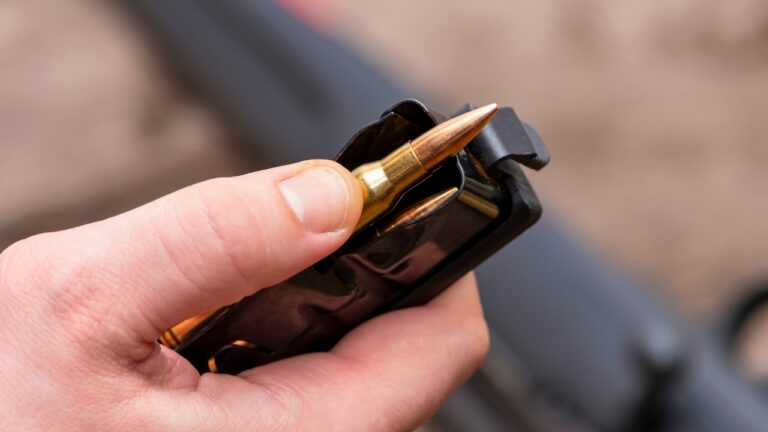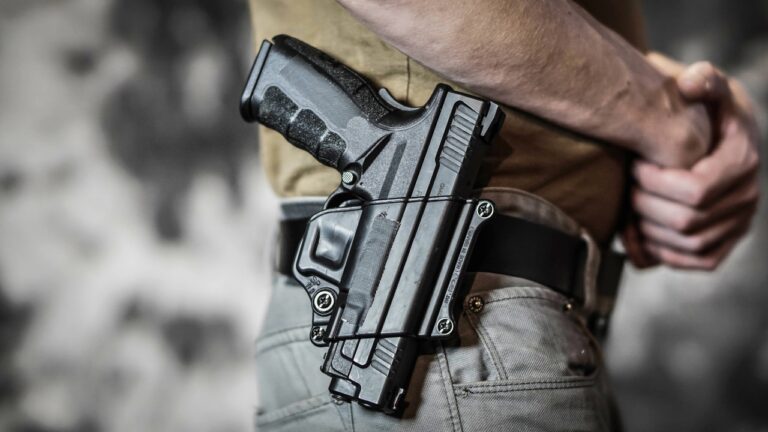You’ve probably seen that bright “Sub-MOA Guarantee” sticker slapped on the barrel of a new rifle at the gun counter. It sounds impressive—under an inch at 100 yards—but here’s the thing: that sticker doesn’t mean what most buyers think it does. Sub-MOA accuracy is usually tested under tightly controlled factory conditions with specific ammo, a professional shooter, and often, multiple rifles cherry-picked for the marketing photo. Out in the real world, with wind, cheap ammo, and a pickup tailgate for a bench, those same rifles often struggle to keep three rounds inside a paper plate. The sticker sells rifles—it doesn’t guarantee performance where it matters.
Factory testing isn’t real-world shooting
When a manufacturer says a rifle “shot sub-MOA,” they’re not talking about what you’ll see in the field. Factory tests happen in climate-controlled tunnels, using match ammo and vice-mounted rests that remove human error completely. Some rifles are even hand-picked for testing, not pulled at random from the production line. That single best group—out of many—is often the one used to claim the accuracy guarantee. It’s like a car company bragging about gas mileage with a tailwind downhill. You’ll get decent performance, sure, but don’t expect that one-in-a-thousand group to happen from your tailgate.
Ammunition makes or breaks the claim

Almost every sub-MOA guarantee comes with fine print that specifies the ammunition used. It’s usually a high-end match or premium hunting load that costs twice what most folks shoot. Try to replicate that with budget ammo, and your “one-inch” rifle may start shooting two-inch groups fast. Rifles have personalities—barrels prefer certain weights and bullet designs. Unless you’re shooting the same load that rifle was tested with, you’re comparing apples to gravel. It’s not that the rifle’s bad; it’s that ammo choice can turn a tack-driver into a scattergun in seconds.
One good group doesn’t define accuracy
Anyone can print a lucky cloverleaf now and then. What matters is consistency. Most sub-MOA guarantees hinge on a three-shot group, not five or ten, and often without cold-bore data. Three rounds can easily slip inside an inch by chance, especially with light barrels and bench setups. Run that same rifle through a box of ammo in summer heat, and those groups usually double. Accuracy isn’t one tight cluster—it’s how predictably that rifle shoots every time you pull the trigger. A real test involves multiple groups on different days, not a marketing photo.
Barrel heat and bedding matter more

A rifle that groups tight when it’s cold might fall apart after three rounds if the barrel heats unevenly or the stock flexes. Factory rifles with pressure points in the forend or uneven bedding often show “wandering” groups after a little heat builds up. That’s something the sub-MOA guarantee doesn’t cover. The rifle may have done fine in the tunnel for three quick shots, but on a hot summer range or long hunt, those conditions change. A rifle’s consistency over time says far more than a single group from a cold bench.
Cheap optics and mounts ruin good rifles
Even if the rifle itself is capable of sub-MOA accuracy, most shooters don’t equip it the way the factory did. A budget scope, soft rings, or misaligned mounts can shift impact half an inch or more with every ride in the truck. That’s enough to destroy any accuracy advantage the barrel offers. The sub-MOA guarantee doesn’t factor in your scope’s internals or your torque wrench settings. A rifle’s precision can only shine when every part of the setup holds tight, and that’s rarely the case for most off-the-shelf builds.
Marketing guarantees are built on averages

What those stickers don’t tell you is that accuracy guarantees are designed around statistical averages. If enough rifles meet the mark, the company can legally claim the standard, even if plenty of others don’t. There’s no federal accuracy testing law—no one’s auditing those claims. You’re trusting marketing data, not a third-party lab. One rifle might be a tack driver, while the next off the line opens up to two inches. If the average batch meets the promise, the sticker goes on all of them, even the sloppy ones.
Shooter skill still matters
No rifle can shoot better than the person behind it. Poor trigger control, inconsistent cheek weld, and flinching can easily double your group size. Sub-MOA rifles are tested by experienced shooters who know how to read mirage, manage recoil, and stay consistent from shot to shot. Most of us don’t have that same discipline every time we hit the range. You can buy accuracy, but you can’t buy skill. If you really want to see what your rifle can do, spend less time believing stickers and more time behind the trigger.
What a real accuracy guarantee should mean

A trustworthy accuracy claim would specify conditions: ammo type, group size, number of rounds, and environmental factors. It would show an average of multiple groups, not a single fluke. Few manufacturers do that, because it exposes the truth—most factory rifles are 1.5-MOA guns in real-world hands. That’s still plenty accurate for hunting deer or elk at practical distances. A marketing sticker may sell you confidence, but experience and consistency are what keep you hitting where you aim. The paper on the wall doesn’t lie, and neither should your rifle.
Like The Avid Outdoorsman’s content? Be sure to follow us.
Here’s more from us:
Calibers That Shouldn’t Even Be On the Shelf Anymore
Rifles That Shouldn’t Be Trusted Past 100 Yards
*This article was developed with AI-powered tools and has been carefully reviewed by our editors.






